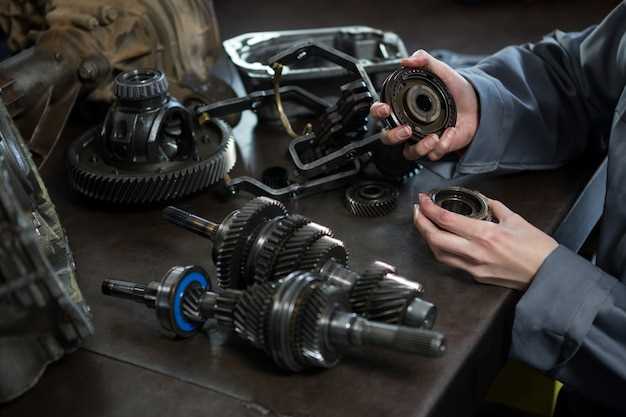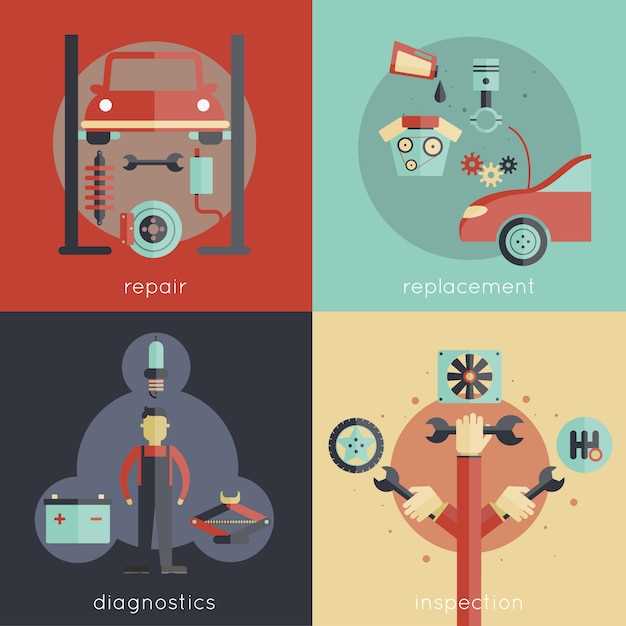
Proper care of your vehicle’s transmission is essential for ensuring longevity and optimal performance. Whether you own a car with a manual or an automatic transmission, understanding the differences between these types can guide you in providing the right maintenance. Regular maintenance not only improves your vehicle’s efficiency but also enhances your overall driving experience.
Manual transmissions often require more driver involvement, making it crucial to pay attention to the clutch, gear shifts, and fluid levels. On the other hand, automatic transmissions are designed for ease of use, but they too demand regular check-ups to avoid costly repairs. Identifying the specific needs of your transmission type can significantly impact your car’s reliability and performance on the road.
In this article, we will explore practical maintenance tips tailored for both manual and automatic transmissions. From fluid changes to routine inspections, these guidelines will equip you with the knowledge necessary to keep your vehicle in top condition, ensuring a smooth and enjoyable driving experience for years to come.
Routine Fluid Checks and Changes for Optimal Transmission Performance

Regular fluid checks and changes are essential for maintaining the efficiency and longevity of both manual and automatic transmissions. The type of transmission in your vehicle dictates specific fluid requirements and maintenance intervals. For manual transmissions, it’s important to inspect the fluid level and quality periodically, as low or contaminated fluid can lead to gear shifting issues and increased wear.
In automatic transmissions, fluid serves as both lubricant and hydraulic fluid, making its condition crucial for optimal performance. It’s recommended to check the transmission fluid level monthly, especially if you notice slipping gears or unusual noises. If the fluid appears dark or has a burnt smell, it’s a clear sign that a change is needed. Regular changes, typically every 30,000 to 60,000 miles, ensure that your transmission operates smoothly under various driving conditions.
Caring for your transmission fluid not only helps to prevent costly repairs but also enhances overall driving performance. Ensure that you use the manufacturer-recommended fluid type when performing changes to maintain compatibility with your vehicle’s specifications. By prioritizing routine fluid checks and changes, you will contribute significantly to the durability and efficiency of your transmission system.
Common Signs of Transmission Issues to Monitor While Driving

Paying attention to your vehicle’s transmission is crucial for safe and efficient driving. There are several common signs that may indicate potential transmission problems that require your immediate care.
Slipping Gears: If your vehicle unexpectedly changes gears or has difficulty staying in gear, this is a clear sign that the transmission is struggling. This may lead to increased wear and tear, impacting overall vehicle performance.
Delayed Engagement: When shifting from park to drive or reverse, a noticeable delay can indicate transmission issues. This delay suggests that the transmission fluid may be low or contaminated, requiring prompt attention to avoid further damage.
Unusual Noises: Grinding, whining, or clunking sounds while shifting gears can signal internal transmission problems. These noises should not be ignored, as they can lead to serious mechanical failures if left unaddressed.
Fluid Leaks: Transmission fluid is vital for proper operation. If you notice red or brown fluid pooling under your vehicle after it has been parked, this may indicate a leak, which can lead to significant damage if not repaired.
Warning Lights: Many modern vehicles are equipped with warning lights that may illuminate if the transmission is experiencing issues. Always pay attention to dashboard alerts and consult a professional if a transmission warning light appears.
Unresponsive Acceleration: If pressing the accelerator does not result in smooth acceleration, this could mean the transmission is not effectively transferring power from the engine to the wheels. This can lead to hazardous situations while driving.
Being vigilant about these signs not only ensures your safety on the road but also helps extend the lifespan of your vehicle’s transmission. Regular maintenance and prompt care can prevent minor issues from escalating into major repairs.
Best Practices for Driving Techniques to Extend Transmission Lifespan
To ensure the longevity of your vehicle’s transmission, adopting the right driving techniques is essential. From manual to automatic transmissions, certain practices can significantly impact performance and durability.
First, avoid rapid acceleration and hard braking. Gradual changes in speed reduce stress on the transmission components, allowing for smoother operation and less wear over time. This is especially crucial for automatic transmissions, which rely on fluid dynamics to shift gears efficiently.
Second, pay attention to the type of driving conditions you encounter. Frequent stop-and-go traffic can lead to increased heat buildup in the transmission. When possible, choose routes that allow for steady speeds. If you find yourself in heavy traffic, consider utilizing a lower gear in a manual transmission to prevent unnecessary strain.
Third, ensure you are shifting gears correctly if you drive a manual transmission. Allow the engine to reach an optimal RPM before shifting to prevent over-revving and unnecessary load on the transmission. Additionally, always engage the clutch fully when changing gears to minimize grinding and slippage.
For automatic transmissions, regularly use the “park” and “reverse” gears appropriately. Engaging these gears slowly and gently will help prevent damage to internal components. Furthermore, using the transmission’s overdrive setting during highway driving can improve fuel efficiency while reducing wear.
Lastly, regular maintenance checks are vital. Always monitor fluid levels and quality, as clean, properly filled transmission fluid is crucial for optimal performance. If you notice any unusual noises or shifting issues, have your vehicle inspected promptly to prevent further damage.
In summary, adopting mindful driving techniques, understanding your transmission type, and maintaining good practices will significantly enhance the lifespan of your vehicle’s transmission.

